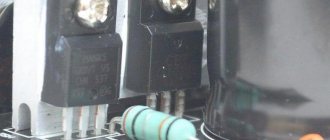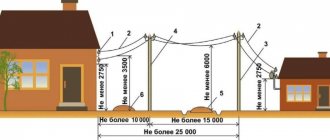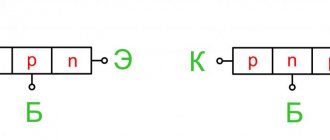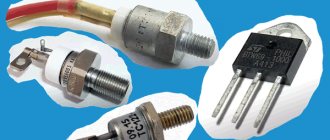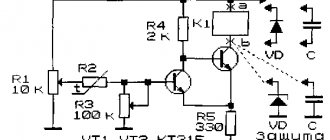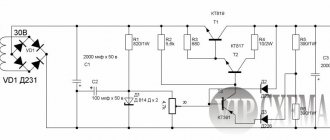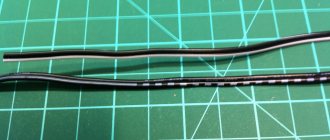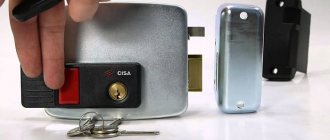How to find the key to her heart?
You can write poems for her, give her flowers, have a romantic dinner or spend unforgettable evenings. This is unlikely to help if it is your favorite car (or even someone else’s), and its heart is a fiery engine. In some cases it is possible - you will have to tinker, especially when there is no normal tool, but you still have to use different keys. Among the variety of wrenches, there are ring wrenches, open-end wrenches, combination wrenches, plumbing wrenches, split wrenches, ratchet wrenches, etc. Let's look at what locksmith keys are, how they differ and what jobs they are suitable for.
Combination keys
The most common wrenches are open-end wrenches. This is a combination of two keys in one. On one side there is an open mouth, on the other there is a twelve-sided ring profile with a bend relative to the key handle. Both key profiles are the same size. As with socket heads, the horn part has less ability to tear off the edges of the fastener, there is more force when tightening or unscrewing, the shape of the jaw with greater force can open the jaw, then damage to the fastener or tool is possible. Due to the large stroke angle, use in hard-to-reach places is difficult.
The cap part is twelve-sided, the “hook” area is much smaller. In such a situation, there is a high probability of “licking” the edges on the bolt or turning the key relative to the edges of the fastener, which sometimes leads to deformation of the tool itself. There is less effort when tightening or unscrewing.
The smaller free play angle allows the wrench to be used in hard-to-reach places. Combination wrenches come in different sizes, both metric and imperial. There are shortened, elongated, with different angles of the cap part, or with an end head on a hinge instead of a ring profile. Often such keys are found with a ratchet, we will look at them below.
Types of Wrenches and How to Use Them
adjustable wrench
It is also “sickle-shaped”; it has one fixed jaw and one adjustable one, which allows it to be used for fasteners of various sizes. Jaws are typically smooth and flat and are designed to grip square and hex nuts. The head of this wrench is typically angled at a 22° angle to the handle, so the wrench can be reversed to provide two positions for gripping hard-to-reach areas.
How to use
The crescent wrench is designed to accommodate both the fixed and movable jaws, but ideally the majority of the work should be done with pressure applied only to the fixed, stronger jaw. Putting too much pressure on a weaker, adjustable jaw can cause it to break and scrape the knuckles in your hand. When fixing the wrench on the nut, the adjustable jaw should be located on the side from which rotation is to be performed. Then pressure will be exerted on the stationary sponge. Below you see a picture illustrating this method:
Also, make sure the adjustable jaw fits snugly against the nut or bolt to prevent the edges on the fastener from slipping and stripping.
open-end wrench
They are usually purchased in sets (labeled in metric and standard SAE sizes), although you can buy them individually. Open-end wrenches have several advantages over adjustable wrenches. First, since both jaws are fixed, you won't have to worry about breaking the adjustable one. Secondly, they are really handy when you are working with a lot of nuts and bolts of the same size.
How to use
Everything is simple here, select a key that is suitable in size and rearrange the key on the fastener after each turn.
Spanner
This tool has a closed hole, similar to a ring. The closed hole minimizes the risk of damage to the hardware head. This type is usually used for heavy duty work. The hole in a box wrench usually has six or twelve recesses, and these are best used when working with hex bolts or nuts. The twelve-point indentation allows you to change the position on the nut with just a small movement of the handle. Some types have an offset handle (curved) that provides clearance, allowing your hand to clear obstacles on the plane on which you are tightening the nut. Socket wrenches with a ratcheting mechanism are also available for greater convenience and efficiency.
How to use
There is nothing complicated about this, just like with regular carob.
Combination key
Typically, open-end and cap wrenches are sold in a “two-in-one” version - this is a combination wrench. It has a carob end at one end and a cap end at the other. Both usually fit the same size.
Socket wrench
When you need to tighten or loosen a lot of nuts at once, it's time to put aside the crescent or open-end wrench and pick up its more efficient brother, the socket wrench. This is a hand tool with a ratchet on the end that attaches to different sized sockets through a square tab. You can buy a set of sockets to fit all possible fastener sizes (metric and SAE). If you're just starting to build your toolbox, buy a 3/8-inch square ratcheting socket wrench and a set of hex sockets—the twelve-socket version can damage the nut and bolt if you turn the wrench too far.
The biggest advantage of a socket wrench is the ratchet. It is designed so that when you pull in one direction, it is held in place, and when you pull in the other, it releases. This allows you to quickly and securely tighten the fasteners.
The long ratchet handle provides good leverage so you can get enough torque to loosen and tighten a bolt or nut. If you need less torque, use a socket head screwdriver (see below).
How to use
Make sure you get the correct size nozzle. A socket wrench provides powerful torque, making it easy to strip the outer edges of a nut or bolt if you get the wrong size.
Socket head screwdriver
This screwdriver is similar to a regular screwdriver, but at the end there is a head, like a socket wrench. Typically, such a tool is used when less torque is required when tightening or loosening a nut or bolt.
Hex key (hex key)
If you've bought furniture, you've probably owned, if you're lucky, a wonderful collection of these keys. These are the little “hockey sticks” you used to build your bookcase. Hex sockets are used to work with screws and bolts with a hex hole in the head. You can purchase a set of these wrenches from us, and they will be suitable for any job you may encounter.
Open-end wrenches
At one time they were the most popular type of keys, mainly due to the lack of an alternative. With the advent of combination keys, they began to lose their popularity due to less versatility. They are a wrench with two open jaws, usually of different sizes, this allows you to have a smaller number of tools in your arsenal with the same overlap of fastener sizes.
Like most professional keys, they are made of tool alloyed chrome-vanadium steel. Some of them are produced by hot forging followed by heat treatment, which gives the keys special strength and high reliability. The handles of the keys have special grooves or a ribbed surface for better fixation of the key in the hand. There are also various open-end attachments, both for torque wrenches and for extensions.
Spanners
Like open-end wrenches, these wrenches are less versatile. But this is at first glance. A twelve-sided ring profile with a bend allows you to use the wrench in hard-to-reach places, in addition, such wrenches are usually longer (there are also extended ring wrenches) open-end or combined, which allows you to apply more force when unscrewing or tightening fasteners, for example, when adjusting the wheel alignment of the rear axle of the car. Often these keys come in different sizes. The variety of options for such keys benefits their versatility. But this also leads to a serious disadvantage - the need to have a large number of tools in your workshop. This is not a problem for serious technical centers, but can cause inconvenience for a car enthusiast.
Wrenches with a Torx profile (E-shki) are not so well known, although socket heads with this profile are very popular. This is the most non-universal profile. Only suitable for Torx fasteners, which are shaped like a star with six edges. Not intended for use with any other fasteners. Wrenches, in some cases, are more suitable for working in hard-to-reach places than heads.
Reinforced union nozzles are designed to apply high torque and can withstand work with the use of special pipe-shaped extensions. They have a spring mechanism with a button for fixing the pipe. They are usually used to work with cargo or special equipment. The size of the nozzles starts from 24mm and goes up to 65mm.
The use of a ratchet mechanism has become widespread in the production of spanners. And the use of such a tool greatly facilitated and speeded up the work when repairing or servicing a car.
Wrench overview
A wrench is a common tool that is used quite often. For something as simple as tightening nuts or bolts, there are many wrench options available, not even counting the highly specialized wrenches. Just a simple listing of the types of this tool will take more than one minute, and each type has its own purpose, its advantages and disadvantages, which are important to know, here are the main types: carob, cap, combined (carob on one end, cap on the other), end , divorceable.
Open end wrenches
When it comes to talking about a wrench, it is usually the open-end wrench that comes to mind.
In an open-end wrench, the nut is fixed between jaws resembling horns, which gave this wrench its name - open-end wrench. Another name for this type, also used in GOST, is an open-jaw wrench. Open-end wrench The longitudinal axis of the head and the longitudinal axis of the handle are at an angle, usually this angle is 15° (there are wrenches with a different angle).
15° angle wrench
This was done to make it easier to work in confined spaces.
Working with an open-end wrench in tight spaces
The angle between the axes of the head and the handle is also made different, for example 75°, while the angles are combined in one key.
A wrench with the same jaw size on both sides, with jaw angles of 15° and 75°
Often an open-end wrench has two heads (double-ended wrench), one at the ends of the handle, for different sizes of nuts. This halves the number of items in a set of such keys.
Open-end wrenches are widely used due to their relative versatility and simplicity, despite serious disadvantages. The main disadvantage of the open-end wrench is that there are only two small contact zones that are close to the corners of the nut. Pressure on these zones tends to crush the corners; if the size of the throat is slightly larger than the size of the nut, then the wrench will press directly on two corners and, with force, will crush them. The same thing will happen when the key is the right size, but the force will be much greater. As the thickness of the lips decreases, the likelihood of wrinkled corners increases.
An impact wrench, used to unscrew stubborn (sticky or rusty) nuts or bolts, has a special thickening at the second end that receives blows from a hammer or sledgehammer.
Impact wrench operation (UNIOR)
Manufacturers offer open-end wrenches with a modified lip profile. For example, IBEX keys have one lip that is shortened and has a small protrusion, while the other is made convex and the notch is also changed. Thanks to this modification, the key now has two advantages. Firstly, the speed of action - the key can be rearranged without removing the hook from the throat, but only slightly moving it back. Secondly, the contact patches are further away from the corners of the nut, which reduces the possibility of lubricating the edges. A simpler modification can consist of either creating a slight convexity of the working surface or corrugating it. Manufacturers claim that wrenches with a convex working surface can even work with nuts or bolts that have wrinkled edges.
IBEX key (UNIOR)
Box spanners
A box wrench, also known as a ring wrench, is a more advanced type of wrench than an open-end wrench.
Its design does not have the main disadvantage of open-end wrenches, which have only two small contact spots. The head of the spanner spans the entire nut and, under load, the pressure is distributed over all six faces of the nut or bolt, that is, instead of two contact spots, there are six of them, in addition, the contact spots are located a little further from the corners, this all almost completely eliminates bending of the corners. The head of a spanner wrench is smaller in size compared to an open-end wrench for the same nut, and in general they are more convenient to work with. Socket wrench with 12 edges (UNIOR)
Load distribution on all faces
The spanner head profile can be with 12 edges (the most common option) or 6 (TORX profile). It is more convenient to work with a twelve-sided wrench and only needs to turn 30° to work, while a wrench with a TORX profile needs 60°, so the latter may not cope with screwing or unscrewing in tight spaces. But a wrench with a TORX profile, thanks to its large edges, has a larger contact area, and it is further from the corners of the nut. As a result, you can apply more force with this wrench without fear of smearing the corners.
Key with TORX profile (UNIOR)
The ring may lie in the same plane as the handle (flat key), may be inclined at an angle, usually 15° (bent key), or have an elbow (bent key). For different situations, a certain arrangement of the ring is optimal (sometimes the only possible), but the most universal is a key with a bent head; flat ones are almost never used.
Ratchet spanners (more on them below) are sometimes made with a hinged head.
Socket wrench with swivel heads and ratchet mechanism (UNIOR)
Like open-end wrenches, socket wrenches are often made with two rings of different sizes.
Percussion modifications are available that differ from horn impact only in the head.
For cases where it is impossible to put the key on top, there is an option with an open ring (slotted key). Such situations often arise when servicing hydraulic and pneumatic installations.
Open ring key (UNIOR)
Using an open ring key
The handle of the wrench, for working in hard-to-reach places, can be curved, for example, a motor (starter) wrench is curved in the shape of a crescent (C-shaped), there are also S-shaped wrenches.
Starter C-key (UNIOR)
Combination wrenches
The combination of an open-end wrench on one handle, on one end, and a spanner of the same size, on the other, created a wrench devoid of the disadvantages of each of them individually.
Combination wrenches are the most popular and common. Of course, manufacturers are not limited to a combination of open-end and socket wrenches; they also combine other types, for example open-end and socket, but if we talk about a combination wrench without specifying which one, then we are talking specifically about an open-end wrench. Combination key (Ceta Form)
There are modifications with the head rotated 90°; in this case, when working, the palm rests on the wide plane of the head, and not on the narrow part.
Combination wrench with 90° head (Craftsman)
Adjustable wrenches
An adjustable wrench, simply put, is an open-end wrench with a variable distance between the jaws.
They are more often used in everyday life than in professional work, and in everyday life they are probably more common than other wrenches. Adjustable spanner (UNIOR)
The dislike of professionals towards them is well explained by their significant shortcomings, namely:
- The relatively large size of the head can become an obstacle when working in hard-to-reach places.
- The play of the movable jaw does not allow the nut to be tightly compressed, as a result of which, with a relatively small force, the wrench will smooth out the corners of the nut and break off, which can cause injury to a person.
- Over time, the moving jaw mechanism wears out, causing even more play.
- Low strength prevents the creation of high torque.
- The need to constantly adjust the position of the movable jaw.
And there is only one advantage - the variable distance between the jaws. And this advantage can be negated by a socket wrench with interchangeable heads or a bicycle one.
Socket wrenches
Socket wrenches have a recess in the end, usually in the form of a hexagon, enclosing a bolt or nut; they are primarily used in servicing automobiles.
Often these keys are L-shaped, with a hexagonal notch on both ends. Moreover, the size of the notch on both sides is the same, that is, not like, for example, ring wrenches. This is due to the different functionality of the two ends: with the long part you can reach deeply “hidden” bolts, but at the same time the lever will be shorter and it will be possible to create a small torque, covering the bolts with the short end, while the long part creates a large torque. Knowing that to unscrew a bolt, more force is required than was applied when tightening, due to souring of the threaded connection, when tightening, you can use the short part as a lever (if this is possible and the bolt is tightened strongly enough), and to unscrew the long part, this will protect you from a situation where a tightly tightened bolt or nut cannot be tightened. L-shaped socket wrench (UNIOR)
There may be a hole on the bend of the key for protruding parts (UNIOR)
A socket wrench can have a twelve-sided recess, like a socket wrench, with the same pros and cons compared to the TORX profile, namely: to work, it only needs to rotate 30°, it is more convenient for them to work, it will lubricate the corners of the bolt with less force or less bolt head wear. Sometimes hex and twelve-sided heads are combined in one key.
Keys are produced with the head attached to the handle through a hinge. In this case, the sizes of the heads at both ends are different.
Socket wrench with articulated heads (UNIOR)
Working with a key with articulated heads
There are T-keys with one head; in the form of a cross - some balloons; with replaceable heads, significantly reducing the dimensions of the set; Various accessories are available for replacement heads.
Manufacturers also offer the following options:
8 Profile Socket Wrench (Craftsman)
It has a very significant drawback - the very large size of the head, which limits its use.
Tubular wrenches
A tubular wrench is a tube with a hexagon formed at the ends; holes are made in the tube for a knob (a rod that acts as a lever).
The size of the hexagon at the ends of one key is different. Such simple keys are sometimes equipped with equipment and machines, in particular cars. Tubular wrench
Sometimes manufacturers bend the tube to create an L-shaped tubular wrench. They have the same hexagon size at the ends of one key, and the functionality of the positions is the same as that of L-shaped socket wrenches.
L-shaped tubular wrench (UNIOR)
A type of tubular wrench is a spark plug wrench (for automobile spark plugs), which has a hexagon on one side.
Candle key
The cavity of the tube can accommodate protruding parts of threaded connections, for example, strongly protruding parts of a spark plug.
Ratchet wrenches
Socket and socket wrenches have modifications with a ratcheting mechanism (or, in other words, with a ratchet).
The main advantage of a ratchet wrench is that you don’t have to flip the wrench. Another important advantage is the very small angle through which the wrench must be turned to tighten or unscrew the nut. Ratchet mechanisms differ, in particular, in the number of teeth; if the mechanism has 72 teeth, then 5° is enough to rotate, if 40, then 9°, etc., the angle is 360° divided by the number of teeth. This is very important when working in very cramped conditions. Ratchet spanner (UNIOR)
Handle with ratchet for socket heads (UNIOR)
The disadvantage of the ratchet is that it is the weak point of the wrench and breaks under excessive load, at a significantly higher cost of such a tool.
Other keys
In this topic it would be useful to mention other keys that are just as important as those described above. Thus, the bicycle key, familiar to many, used to be an integral part of any bicycle.
Bicycle key
A spoke wrench is still a necessary part of a bicycle tool kit, but it has changed a lot.
Spoke key
The colic mounting wrench has a second end in the form of a tapering rod. When installing equipment, the rod aligns the holes of the parts before inserting the bolts into them.
Colic mounting wrench
If you need to remove a stuck nut, you can use a special nut breaker, put the nut on the nut and tighten the wedge with a wrench, which cuts the nut on one side; after the nut cracks, it can be easily removed.
Nutbreaker (STAYER)
To unscrew a stuck bolt (nut), use the impact wrenches described above.
In addition to hex nuts, others are also used, for example round ones, for which the keys must be appropriate.
Key for round spline nuts (UNIOR)
Swivel wrench for round spline nuts (UNIOR)
Working with a round spline nut
Key with pins
Working with a round nut with holes at the end
Adjustable wrench for end-hole nuts (GEDORE)
Torque wrenches are used to control the force (torque) with which a nut or bolt is tightened. They can either only signal when the set torque is reached, or they can indicate the applied torque.
Torque wrench indicating applied torque (UNIOR)
Plumbers cannot do without a pipe wrench, which has an adjustable position of the lower jaw, representing a large group of tools. They are characterized by the presence of a notch on the jaws, which ensures reliable grip of parts without special edges.
Swedish type pipe wrench (UNIOR)
American type pipe wrench (UNIOR)
To prevent the notch from spoiling the appearance of the part, when this is important, a gasket, for example made of wet leather, is placed between the jaws and the part. However, there are modifications with plastic linings and without notches - reinforcing keys.
Chain wrenches are used to grip large diameter round parts such as pipes and oil filters.
Chain wrench (UNIOR)
Instead of a chain there may be a belt.
Belt wrench (UNIOR)
Working with a belt wrench
IMPORTANT! When purchasing a wrench (especially online), pay attention to whether it is metric or inch; and always use the appropriate exchange key.
When using the content of this site, you need to put active links to this site, visible to users and search robots.
Literature
Ratchet wrenches
There are both combined and cap ones. Basically, the ratchet is built into the "socket" part of the wrench. But there are also keys with a ratchet in the horn part. The cap part, as a rule, has a flag-switch for the ratchet mechanism if it is located at an angle relative to the wrench handle. “Straight” keys do not have such a flag, but are simply turned over to unscrew/tighten the fasteners. Wrenches with a ratchet on a swivel also come without a flag; the cap part of such wrenches rotates relative to the handle at an angle of up to 90 degrees.
In some cases, the horn part has notches on the working surface, which securely holds the fastener. Such modifications apply not only to ratchet wrenches, but also to regular ones. Due to their compact size, these wrenches are more convenient to use in hard-to-reach places than a conventional socket ratchet. You cannot rip off a tightened nut or tighten a bolt with such a wrench; the ratcheting mechanism is not designed for this purpose and you can break it. They are intended only for unscrewing and tightening fasteners. Breaking and tightening are done with ordinary keys.
Wrench assignments
If you carefully look at the types of devices in the photo, you can understand that in addition to the models found in our homes, there are many more variations. They differ from each other not only in form, but also in purpose of use .
For example, a fire hydrant wrench is used for only one purpose. While the rest, say, combined or adjustable tools, can be used for various areas.
Such a variety of devices is necessary to ensure comfort in the work of not only professional specialists, but also in the lives of ordinary citizens.
A properly created tool helps to quickly complete the repair task assigned to a person.
Socket wrenches
Their shape differs in many ways from the usual open-end and ring wrenches. It is essentially a handle with a socket head attached to it. They differ from each other both in their shape and in the profile of the end (working) part. The most common are “bells” with two end heads on hinges and of different sizes. The profile of the end part is usually twelve-sided.
T-shaped and L-shaped are not so popular. A T-wrench is a wrench and extension with a non-replaceable socket head. This design is inferior in versatility to conventional socket heads with the ability to combine the sizes of all three parts, so such wrenches have to be available in the entire range of sizes - not very convenient and expensive when such a design can be assembled from a simple set of tools. But for some specific purposes, when you need one key of the same size, such a purchase will be profitable. L-shaped keys are practically no different from T-shaped keys except their shape. They are often used as a “balloon” wrench. There are variations of through L-shaped wrenches for working with studs and deep-set nuts. They have a hollow tube-handle and a hole in the bend for the “passage” of a pin. The advantage of both types of wrenches is that they have a hexagonal head profile, which increases the effort when working with fasteners and reduces the likelihood of “licking” the edges of the fastener.
Types of keys
Size is usually indicated by parameters such as jaw spacing . In the 19th century and early 20th, the nominal size of a tool was most often determined by following the general parameters of the thread it created. In modern practice, there are notations based on the total distance between two planes.
Dimensions should be considered based on indicators such as the jaw (the distance from one jaw to the other), the thread (nut) parameter, and the length of the handle. The next parameter carries a distance from 3.2 mm to 155 mm, the second from M1.6 to M 110; and the third - from 150 millimeters to 500.
Single- and double-sided open-end wrenches
Such keys have open ends . Their opening is U-shaped. Most often they vary in size. These products should be used when working with nuts and bolts that are very difficult to access. They give a lot of space when unscrewing.
Double-sided spanners
The device of the wrapped type has a closed circuit at both ends . The product is most often used for hexagonal nuts or bolts. But in some cases it can be created in the shape of a square. The loops at both ends are equal in size. Products of this type are used in cases where open models cannot perform the task assigned to them.
Combination keys
Combination instruments, as their name suggests, are presented in the form of a combination of a spanner model and an open-end wrench . They have a closed loop at one end and an open loop at the other. The wrench can be used to loosen bolts and nuts and then quickly removes them using the open end.
Combined types of keys are most often used to perform combinations, as a result of which both rings acquire the same diameter.
Adjustable and adjustable wrenches
Such products are presented in an open type. They are used only at one end. The overall size of the hole was not recorded. It may vary depending on the bolt or nut. But these types of wrenches are almost impossible to use in hard-to-reach areas.
This type of adjustable wrench is the most commonly used today. The adjustable end device differs from the usual one in that the gripping surfaces of the jaws in it are shifted 15 degrees to the side relative to the handle of the device. The modern adjustable socket wrench was created by Johan Peter Johansson.
Now you need to consider how to use the adjustable product:
- Decide on the nut or bolt you want to secure.
- Open the rotary key while turning the screw. Check whether you have opened it well so that the nut can fit completely into it: if not, it should be opened more. Make sure it is open a little more than the size of the nut or bolt itself.
- Slide the free part of the tool head onto the nut and hold it in place. Turn the screw mechanism so that it can squeeze the nut tightly.
- Turn the device clockwise to tighten the screw more tightly, or counterclockwise to loosen it significantly. Continue turning until the nut is tight or loose enough to remove.
- Release the device and loosen the mechanism screw.
End models
It is customary to place the end device completely on the bolt or nut. When this type of wrench is used, it does not need to be completely removed from the head of the nut or bolt after turning. The handles can be removed and reinserted while the socket remains above the bolt.
Adjustable device, main disadvantages:
- The relatively large size can become a significant obstacle when working in hard-to-reach places.
- The play of the movable jaw does not allow the nut to be tightly compressed; ultimately, with a small force, the wrench smooths out the corners of the nut and breaks off, at which time a person can receive significant injury.
- Over time, the movable jaw mechanism wears out greatly, leading to severe backlash.
- The low strength index prevents the creation of large and torque.
- The need to adjust the position of the movable jaw.
There is only one advantage - the ability to change the distance between the jaws. But even this advantage can be negated with a socket wrench with replaceable or bicycle heads.
Impact wrench
The types and sizes of products can be completely different. The impact type is a special thick, short and stocky tool with a block end handle that is specifically designed to work with a hammer, which helps give it more force in its work.
It is most often used with large fasteners, a special nut and a font that have indication marks.
Impact wrenches are very durable and can withstand the high force required to release large stuck bolts and nuts. They will also help when free space does not allow the use of a large device.
Hex tool
This device has a hexagonal end. The tools are used to unscrew a bolt with a hexagonal recess at the end. The method of doing this is similar to the method of working with a screwdriver. In order to better understand the principle of operation of such products, it is worth studying the types of wrenches, especially you need to pay close attention to photographs of the products.
Illustrative information helps to learn in more detail about the features of any model.
Hexagonal devices can be of two shapes: with L-shaped and T-shaped handles. L-shaped wrenches are created from hexagonal wire, while T-shaped wrenches are considered to be the same hexagonal wire with a metal or plastic handle attached to a specific end.
The types of keys and their names can also be studied at a hardware store . Most of the names of the devices come from their appearance.
Such hexagonal products have a head on a short arm and a hexagonal ball head on a longer arm. They enclose a large contact surface on the head of the screw. This reduces the possibility of excessive wear or rounding of corners in the screw.
The ball on the long arm is needed so that the key can be easily inserted into the head, which will help turn it at a certain angle, this is very important for use in hard-to-reach places.
The round key shafts fit well in the hand and help make work as simple as possible.
Since stainless steel is used for such high-quality products, there will definitely not be any problems with rust. If you notice it on the surface of the device, then there can only be one reason. This occurs due to the active use of the device in order to turn screws or bolts of excess steel. The pressure leaves traces or components of another metal on the stainless steel beak and in this case corrosion develops under the influence of oxygen.
Balloon instruments
This type of device is used to loosen and tighten nuts on car wheels. In the United Kingdom and Austria it is widely used as a wheel brace .
Wrenches of this format may have an L-shaped metal rod with an end product on a curved tip and a knee on the other. The gripping tip is used to remove the caps from the wheels, which are secured with tip hooks.
Gedore is a particularly popular company in the construction tools market. It creates high-quality products that are actively used by motorists from all over the world. The appearance of the first Gedore kits will definitely appeal to every car enthusiast.
Another common species, sometimes called the key spider, is presented as a cross with spaced nests at each of the four ends.
It is best if the bolts (or nuts) are tightened using a torque tool. Such devices are much cheaper. Installing wheels when using them requires more force. Excessive force can make the nut very difficult to remove. In addition, uneven distribution of force between the nuts and the device itself can lead to deformation of the brake rotor if the car has disc brakes.
For this reason, balloon tools are best used only for removing nuts from the tip, and not for tightening them . In practice, this rule is very often not observed even by professional mechanics themselves.
For every auto mechanic or ordinary person whose profession is inextricably linked with the use of a large number of tools, you can buy cutlery in the form of wrenches. They will definitely like such an unusual gift.
Tubular model
- The tubular device is represented by a tube, at the ends of which there are hexagons; special holes are made in the tube for a knob (a rod that plays the role of a lever). The size of the hex on the end of one key will vary significantly. Such simple products are sometimes equipped with equipment and some machines, including cars.
- In some cases, the manufacturer bends the pipe to create an L-shaped tubular device. They have the same hexagon indicator at the end of one key, and the functionality of the positions is just like that of L-shaped socket devices.
- A type of tubular device is considered to be a spark plug (for automobile spark plugs); it has a hexagon on one side.
In the cavity of the pipe there may be protruding parts of threaded connections, for example, strongly protruding parts of a spark plug.
Balloon keys
Designed for unscrewing nuts or bolts securing a car wheel (balloon - hence the name). This is a mandatory tool on the list of things needed in a car, of course, if the car has a spare wheel.
Socket wrenches, unified for a specific task - to help change a wheel. Mostly they have dimensions of 17,19,21,22 mm. L-shaped ones come with a telescopic handle, also rubberized, with replaceable or non-replaceable socket heads.
X-shaped ones have more modifications, they are: folding/adjustable or fixed reinforced, with three or four socket heads of different sizes and with a mounting square with the ability to put on regular heads, or a hex adapter into a head for a mounting square. The profile of the working part is usually hexagonal.
Box spanner
It has a solid head with an internal vertical thread and, during operation, “snaps” onto a nut or bolt. This design allows you to evenly distribute pressure on all sides of the object and not erase its corners. However, this type of wrench may not work everywhere, but only where there is direct access to the entire bolt. In other cases, a combined tool is used, which has one open-end head and the other a cap head.
Split keys
If you “lick” the edges of a nut, for example, on a hydraulic tube or car hose, then simply replacing the nut is often not enough. The entire tube/hose must be replaced or repaired. And if this is a frame SUV, then the surprises may continue - on some models, fuel pipes or air conditioning system pipes are changed by removing the body from the frame.
To avoid such problems, split keys were invented. The jaw of such wrenches is hexagonal with maximum grip of the nut and with a slot for the possibility of putting such a wrench on the tube. For ease of use in hard-to-reach places, the working part of the key has a slight angle relative to the handle or has a hinge. There is also a twelve-sided profile of the working part of the key; it is easier for them to work in tight places, but the “grab” of the edges of the fastener is less and the possibility of “licking” the edges increases.
Even for this type of key, ratchet mechanisms were invented and patented. The ratchet mechanism allows you to work with fastening fuel, brake and other pipes without moving the wrench, and is convenient for working with threaded connections in conditions of limited access.
Once again, it is worth reminding that you cannot rip off or tighten a tightened nut with such a wrench! The ratchet mechanism is not designed for this purpose and can be broken. Such keys are intended only for unscrewing and tightening fasteners; breaking and tightening are done with ordinary keys.
Impact keys
Made from tool carbon steel of a special alloy with special characteristics. The keys are designed to work in difficult conditions under heavy loads. The key manufacturing technology includes the hot forging method followed by heat treatment, which gives the keys special strength and high reliability. They are used for repair and maintenance of large-sized equipment and structures, as well as in industry, agriculture, manufacturing, construction, and at service stations for automobiles and other equipment.
Adjustable plumbing wrenches
A universal type of open-end wrench with the ability to adjust the size of the jaw due to a screw or worm mechanism. One “sponge” remains stationary, while the other, due to a mechanism for changing its size, moves in the cavity of the handle. They have markings that allow you to “adjust” the wrench to the size of the fastener or use it as a measuring tool. There are wrenches with a ratcheting mechanism, which allows you to carry out work without removing the wrench from the fastener. One such wrench can replace a set of open-end wrenches, but due to its large dimensions, it is difficult to work in hard-to-reach places. Professional adjustable wrenches are made of high-carbon steel with additives (chrome, vanadium). To improve the characteristics of the alloy, plating with nickel, chromium or phosphate is used. Even after long-term use, there is no play or distance when the jaws are compressed.
Material of manufacture
When screwing, and especially unscrewing, hardware with screw threads, the handle and jaws of the wrench experience significant loads. If the metal of the bolt or nut is harder than the metal of the key, then the jaws will simply “lick off”. The jaw of the tool will become too large and the wrench will turn without touching the edges of the nuts and bolts. If you work with a tool that is too hard, it is easy to damage the nut, turning it into a circle and rendering the wrench useless. The hardness of the metal must be commensurate with the hardness of the hardware. Therefore, for the production of wrenches, tool steels with certain parameters standardized by GOST 4543 61, 1050-60 and later standards are used.
According to the requirements of the standards, the hardness of open-end wrenches up to 36 mm in size must be at least HR 40-45, and those up to 41 mm in size - HR 38-45 units. Adjustable wrenches with a worm mechanism are produced from alloys with a hardness of HR 40-45. The most common steel for wrenches is 40X. But many manufacturers choose other brands that are more durable. Contains vanadium and other metals.
If AISI 5140 is written on the key, then this is the same 40X chrome steel, only according to the American standard. More popular among professionals are keys made of chrome vanadium steel. In domestic vintage brands it is designated as 40HFA or 40HF, analogues of which are:
- AISI 4140;
- 41CrMo4;
- 42CrMO4;
If you bought a set of keys from the USA, England, Japan or Germany, then these are the steel grades that will be indicated on them. More often the marking is CrV or 50 CrV 4. This is one of the best and most popular steels for household and professional tools. Also designated CHRONIMO 1.2242, DIRO-59 CrV 4, VC 12.
Whether the wrench or packaging says Made for... or Designed in..., Drop Forged Steel is a household-grade tool that can be used to tighten a few nuts or bolts and then sell it for scrap. They are usually made of carbon steel, which cannot withstand heavy loads due to its ductility.
Pipe wrenches (“gas”)
They got their name because of the scope of application - maintenance of pipes and fasteners of various profiles. But they have also found distribution in the field of car repair. They have two main versions - lever and Stillson wrench.
A lever wrench consists of two lever-handles fastened together, one of which remains stationary, and the second is adjusted by a nut and thread located on the other lever. At the end there are sponges with notches. The shape of the jaws is designed so that they clearly fit and fix the hex nut, and the notches prevent the tool from slipping, which in some cases allows you to firmly clamp the pipe. By adjusting, you can adjust the wrench to the size of the fastener or pipe.
The Stillson wrench has a handle with a “sponge” and a movable lever attached to it; adjustment occurs by rotating the nut and moving the lever. Fixing the key does not require the use of a second hand, which adds convenience to using this tool. The alloy steel “jaws” are “hardened”; the reverse direction of the teeth improves the “grip”.
Keys of this type, for the most part, are large in size, which does not allow working in hard-to-reach places. Their use is widespread in industry, agriculture, manufacturing, construction, and at service stations for automobiles, trucks and other equipment.
